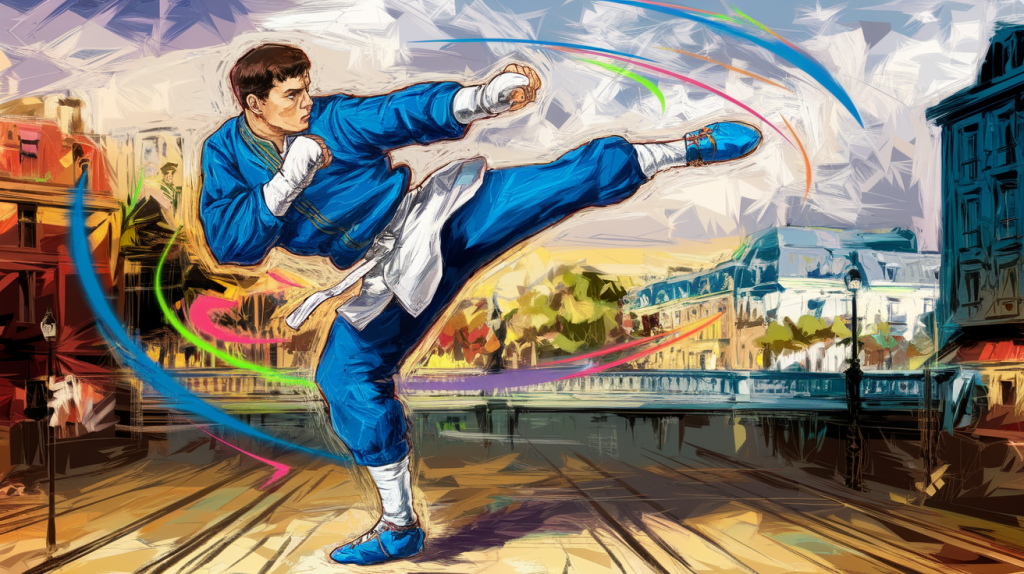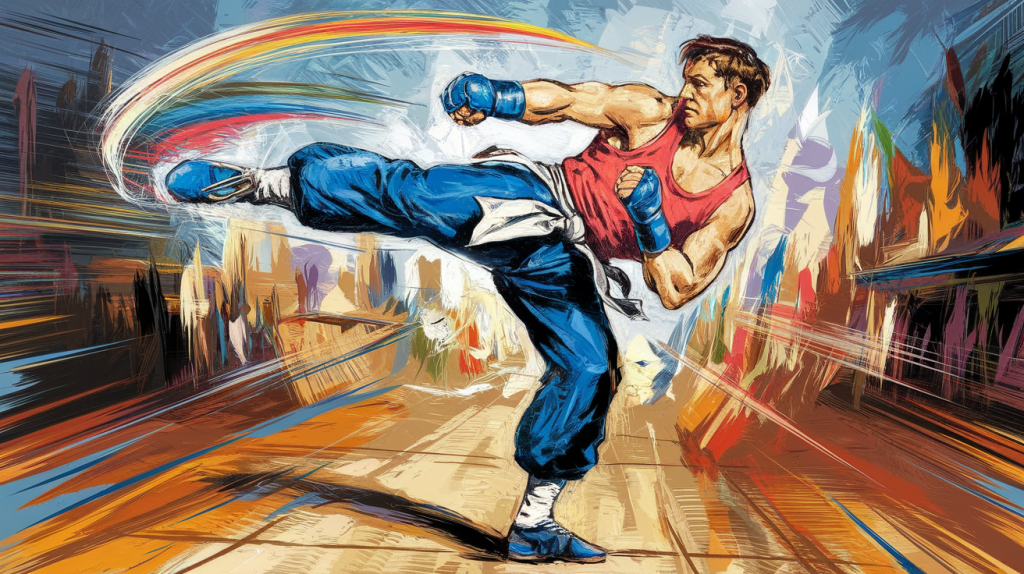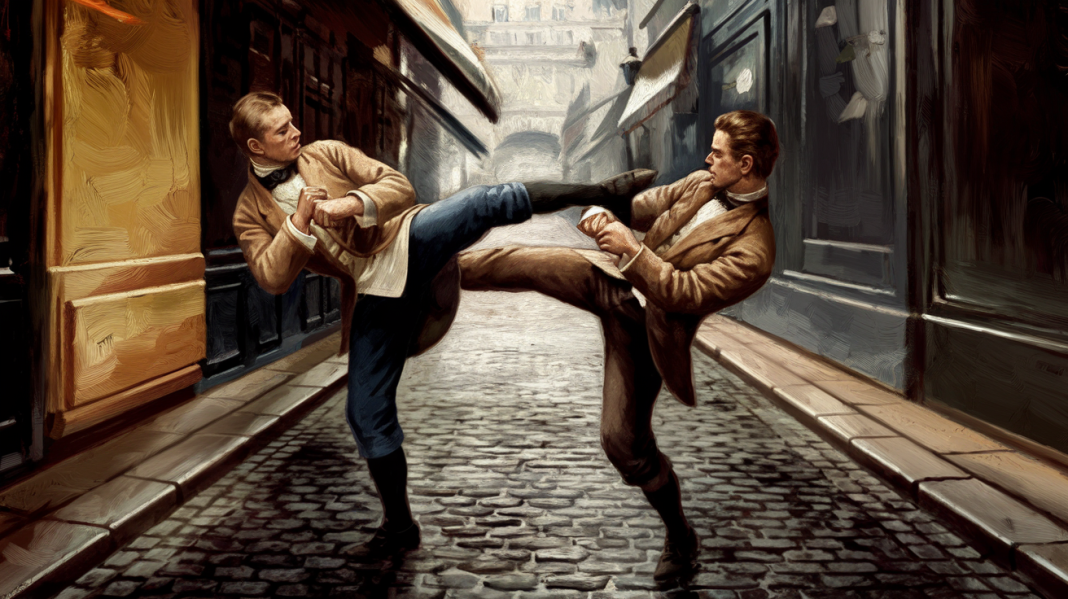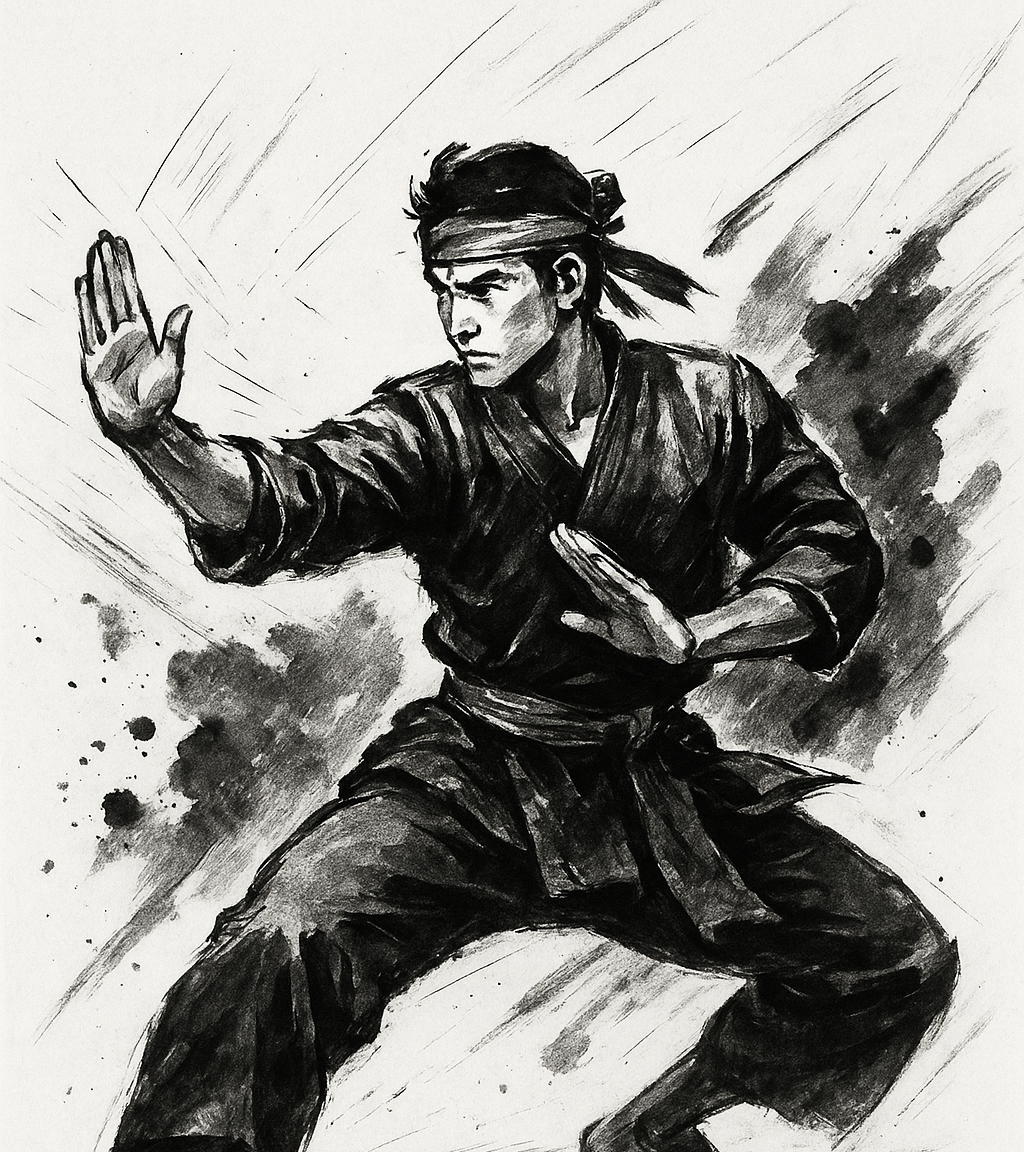Early Roots in the Streets of France
Savate, also known as French kickboxing, began in the backstreets of Paris and Marseille in the late 18th and early 19th centuries. It was originally a rough-and-tumble form of street fighting. Dockworkers, sailors, and criminals in Marseille used powerful kicks with their boots—known as savate (French slang for “old shoe” or “boot”)—to brawl in the alleys and ports.
In Paris, another style emerged called chausson, which combined agile kicks with techniques sailors had picked up while traveling. Unlike the brutal Marseille style, chausson was more refined and precise, emphasizing balance, timing, and elegance.
Training for Survival in the Streets
Before Savate was recognized as a martial discipline, fighters didn’t train in polished gyms or academies—they trained wherever they could. Street fighters and sailors would practice kicks by striking barrels, posts, or even the sides of ships to toughen their legs and boots. Conditioning was brutal: men kicked wooden poles to harden their shins and developed incredible balance by practicing on uneven cobblestones or the rocking decks of ships.
Hand-to-hand drills were often improvised. In Marseille, fighters sparred with little to no rules, using low kicks to cripple an opponent’s legs and stomps to finish fights quickly. In Paris, practitioners emphasized agility—training by leaping, dodging, and delivering quick high kicks that could take down an enemy before he had time to draw a weapon.
The common theme was efficiency: Savate fighters trained to win street encounters fast, often against multiple attackers, and escape before the police or rival gangs arrived.

Transition to a Martial Discipline
By the early 19th century, Frenchmen like Michel Casseux (le Pisseux) and later Charles Lecour sought to turn Savate into a disciplined fighting art. Casseux opened the first formal training hall in 1825, banning dangerous street techniques and focusing on controlled strikes. Lecour later combined English boxing hand strikes with French kicking, creating what we now recognize as modern Savate or boxe française.
This blend of French kicking and English punching created a uniquely European martial art that was both practical for self-defense and elegant as a sport.
Savate as a Gentleman’s Art
By the mid-1800s, Savate was no longer a brawler’s tool but a system taught to military men, aristocrats, and even members of the French elite. It became part of officer training and was viewed as a “gentleman’s art of self-defense.” Its mix of grace and efficiency made it stand out from other martial arts.
The rules of sport Savate, with gloves, shoes, and weight classes, were established later in the 19th century. By the 20th century, Savate had spread worldwide, influencing kickboxing and MMA fighters with its fast, technical kicking game.


Legacy and Modern Practice
Today, Savate is practiced globally, with practitioners respecting both its street-fighting roots and its refined sporting tradition. Known for lightning-fast footwork, elegant high kicks, and precise striking, Savate remains one of Europe’s greatest martial arts legacies.
It embodies the French spirit—stylish, efficient, and deadly effective when needed.


